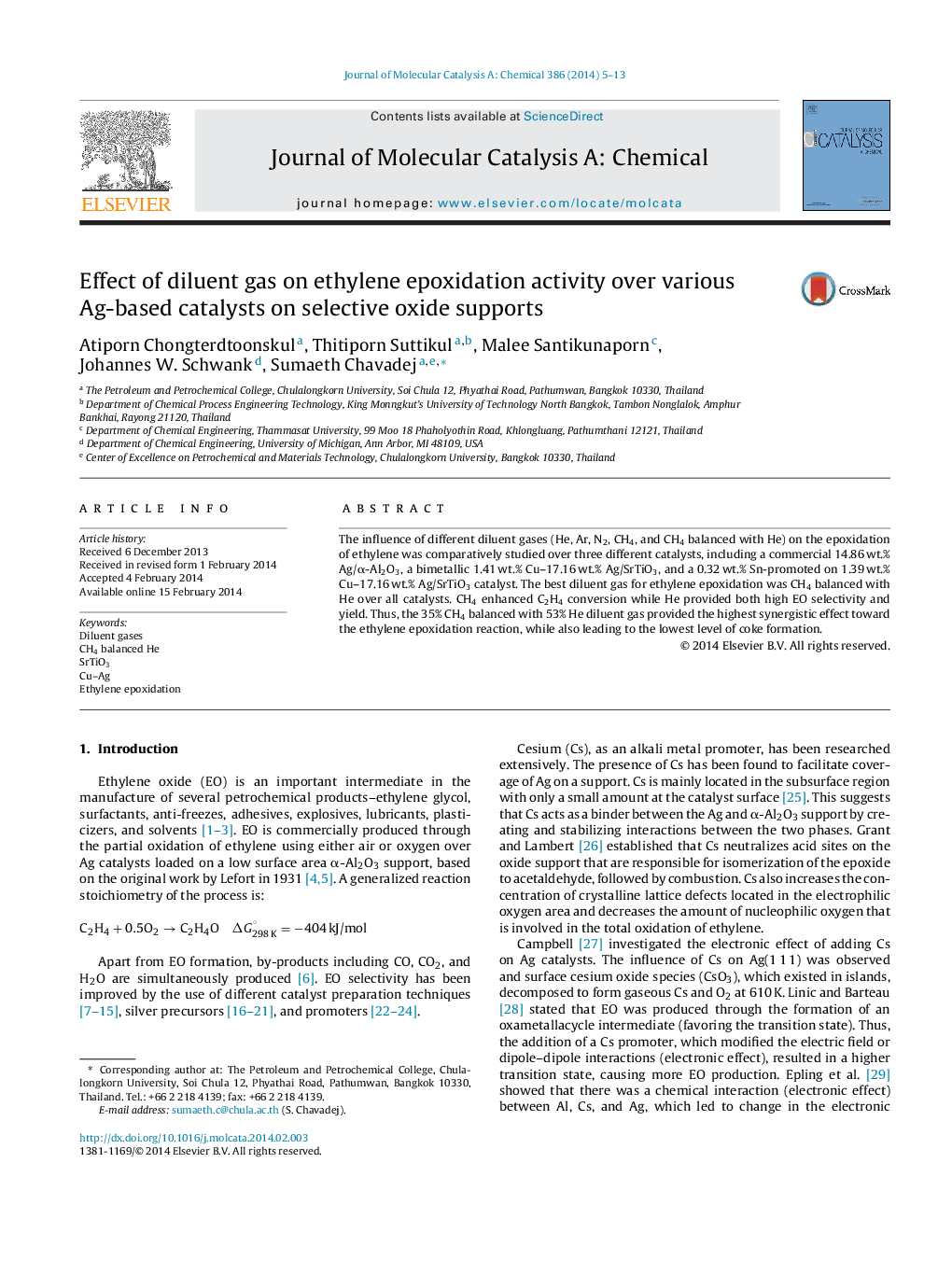| Article ID | Journal | Published Year | Pages | File Type |
|---|---|---|---|---|
| 65538 | Journal of Molecular Catalysis A: Chemical | 2014 | 9 Pages |
•The 0.32 wt.% Sn–1.39 wt.% Cu–17.16 wt.% Ag/SrTiO3 provided the highest EO selectivity.•The best diluent gas was found to be 35%CH4/53% He over all studied catalysts.•CH4 enhanced C2H4 conversion while He provided both high EO selectivity and yield.•The 35% CH4/53% He produced the lowest coke formation and highest long term stability.
The influence of different diluent gases (He, Ar, N2, CH4, and CH4 balanced with He) on the epoxidation of ethylene was comparatively studied over three different catalysts, including a commercial 14.86 wt.% Ag/α-Al2O3, a bimetallic 1.41 wt.% Cu–17.16 wt.% Ag/SrTiO3, and a 0.32 wt.% Sn-promoted on 1.39 wt.% Cu–17.16 wt.% Ag/SrTiO3 catalyst. The best diluent gas for ethylene epoxidation was CH4 balanced with He over all catalysts. CH4 enhanced C2H4 conversion while He provided both high EO selectivity and yield. Thus, the 35% CH4 balanced with 53% He diluent gas provided the highest synergistic effect toward the ethylene epoxidation reaction, while also leading to the lowest level of coke formation.
Graphical abstractEO selectivity over the 0.32 wt.% Sn–1.39 wt.% Cu–17.16 wt.% Ag/SrTiO3 at 6 h and 72 h on stream with different diluent gases (He, Ar, N2, CH4, and CH4 balanced with He).Figure optionsDownload full-size imageDownload high-quality image (111 K)Download as PowerPoint slide
